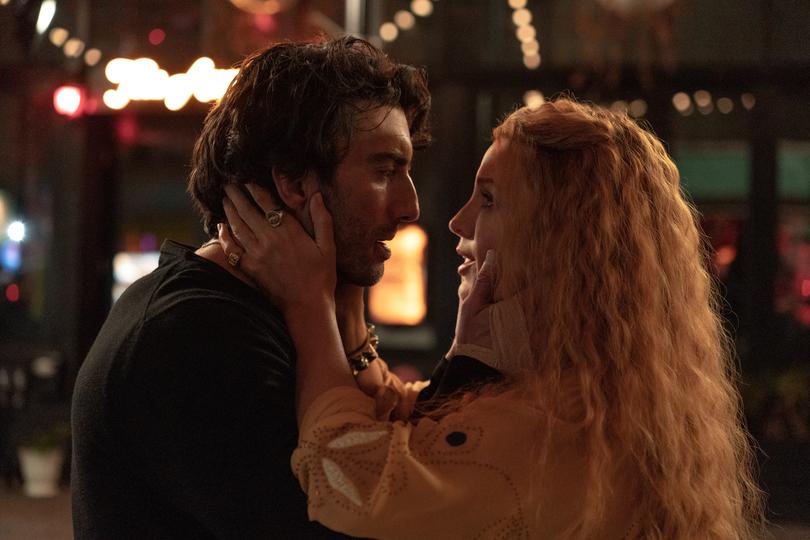Blink Twice includes a trigger warning, so why didn’t It Ends With Us?

If you’ve been to see the new Channing Tatum movie Blink Twice this weekend, you may have been confronted with an unusual sight.
Right before the film started, the screen flashed with a trigger warning. It said: “Blink Twice is a psychological thriller about the abuse of power. While this is a fictionalised movie, it contains mature themes and depictions of violence — including sexual violence.
“This may be upsetting or triggering for some viewers.”
Sign up to The Nightly's newsletters.
Get the first look at the digital newspaper, curated daily stories and breaking headlines delivered to your inbox.
By continuing you agree to our Terms and Privacy Policy.The message then lists its resources website where it has contact details for US-based counselling services but also links out to an international directory on which you can find Australian services for sexual violence and intimate partner violence.
Trigger warnings of distressing content ahead have become more commonplace on streaming services and TV, but it is still extremely rare in cinema releases. Blink Twice may be the first high-profile Hollywood release to include one — certainly no others come to mind.

Professor Silke Meyer is the Leneen Forde chair of child and family research at Griffith University and she agreed that filmmakers, studios and distributors have a responsibility to the audience to inform them if they are about to be confronted with triggering themes or scenes.
“It’s not just about the movie rating of whether this is safe in terms of age appropriateness, where we have an industry that complies with that,” she told The Nightly.
“It is equally fair to ask the industry to also acknowledge and take responsibility in recognising the triggers of certain content, given the high prevalence rates we have of different types of victimisation, whether that’s sexual victimisation experiences, intimate partner violence or coercive control.
“If we say one in three women have experienced physical or emotional violence in Australia, then it’s also one in three women in a movie theatre on average.”
Cinema releases are an opt-in experience so have traditionally not been held to the same standard as broadcast or even streaming TV in terms of warning their audiences. But that would also depend on how upfront a particular title is about what it contains.
Blink Twice is marketed as a horror-thriller film, so anyone choosing to buy a ticket and walk into a theatre has some idea of what they’re in for. And the movie’s filmmakers, including its director and co-writer, the actor Zoe Kravitz, have been upfront about the real-life people she drew from for Blink Twice’s villain, namely Jeffrey Epstein and other sexual predators.

But the “twist” of the film comes more than halfway through the runtime so the full extent of its dramatised sexual violence is “hidden” from a viewer lest it equates to spoilers.
Kravitz’s choice to include a trigger warning stands in contrast to another current release, It Ends With Us, which has been criticised for not including something similar.
The Blake Lively-starring film has been marketed as a romantic drama with its trailer and promotional posters and images appealing to a female audience acquainted with the visual cues and tropes of films such as The Notebook.
But the movie, and the Colleen Hoover book upon which is based, is actually a drama with heavy themes of intimate partner and family violence.
This is not clear from the way the movie has been packaged, and Lively has come under attack for seemingly minimising or cloaking the film’s central theme with her pop-coloured, floral outfits on the red carpet and upbeat social media messages of “grab your friends, wear your florals and head out to see it.”
Professor Meyer said she recalled Hoover’s book being marketed the same way.
“It had never occurred to me that it is a story about or containing domestic and intimate partner violence because everywhere, it was being promoted as this romantic love story,” she said.

“So I’m not surprised that people went into theatres and expected something like that and were then taken aback or potentially re-traumatised or triggered by the fact that it covers a great deal of family violence.”
Professor Meyer said that while films and TV shows that deal with these themes can have a positive educational impact on the broader community and on victim-survivors in recognising and validating their experiences, there is a risk that comes from not having a trigger warning.
“If people are unprepared for it, it can either re-traumatise or unravel someone’s recovery process,” she added.
She said some people might decide to still proceed with watching something that had a warning and still be triggered by what they see but those victim-survivors had at least been given the opportunity to opt out.
Blink Twice may be either the first or among the first Hollywood films to have a trigger warning but it’s unlikely to be the last.
In 2017, Netflix added a warning and helpline information at the top of its teen drama 13 Reasons Why after it was roundly criticised for not including them despite the series’ explicit depictions of self-harm and suicide.
1800 RESPECT (1800 737 732)

